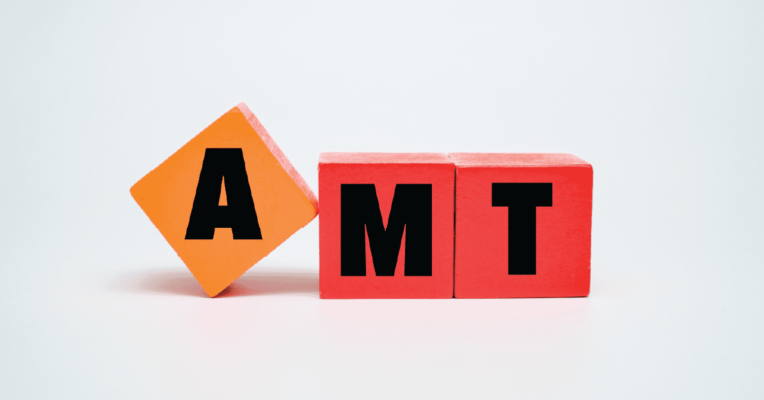Mega Backdoor Roth Boosts Your Retirement Savings
The mega backdoor Roth IRA is a strategy high-earners can use to supercharge retirement savings and shelter investment growth from taxes in retirement.
When circumstances are right, and the stars align, this little-known strategy can be a smart way to tuck extra money into a Roth IRA to use for retirement or to save for your heirs.
Let’s start with the basics.
The retirement savings basics
When you choose to make Roth contributions, you’ll contribute to your account with after-tax dollars. This means you will pay taxes on the money the year you earn it, and you won’t benefit from any tax advantages at the time you contribute.
In exchange, you won’t owe any taxes on your contributions or when you withdraw in the future. Additionally, as long as your Roth contributions have “aged” for at least five years, any earnings your contributions accrue won’t be taxed either.
The 2023 caps have changed since last year. A person younger than 50 can contribute $22,500 into their 401(k). People who are aged 50 and older can contribute an additional $7,500 annually in catch-up contributions, for a total of $30,000 into their 401(k). Limits for total employee and employer contributions have also increased over the past year, and are $66,000 (or $73,500 for people 50 and older).
Some companies’ 401(k) plans are structured to allow for additional after-tax contributions, which can create a “mega backdoor” through which you can invest up to an extra $43,500 into your Roth IRA or Roth 401(k).
We’ll walk you through how it works and if it’s a good move for you, but know now that this is complicated, advanced financial planning with the potential for some unexpected tax bills—definitely work with an expert on this one.
Is a mega backdoor Roth even possible with your 401(k) plan?
There are two prerequisites—if you’re unsure about either, double-check with HR or contact your plan administrator.
- Your 401(k) plan must allow for after-tax contributions. Not all 401(k) plans even let you make after-tax contributions. Quick vocab lesson: after-tax is an entirely different contribution category from pre-tax and post-tax. (We’ve mentioned before how after-tax and post-tax used to be conflated.)
- Your 401(k) plan must also allow for in-service withdrawals or in-plan Roth conversions. In-service withdrawals (also called in-service distributions) mean you can take money out of your 401(k) while you’re still employed with the company, and an option is to roll it into a Roth IRA. In-plan conversions let you move your after-tax contribution into Roth dollars within the 401(k).
If you’re a no on either of these, the mega backdoor Roth isn’t a good strategy for you. Let’s say you’re a “yes” on both.
How a mega backdoor Roth works
When you use the mega backdoor strategy, you take all the money from the after-tax contribution to your 401(k) and quickly transfer it into either a Roth IRA or to Roth dollars within your 401(k) before it can accrue investment earnings. Once it’s in a Roth-style account, the money will grow tax-free instead of tax-deferred, which means you won’t owe taxes on those earnings. Ever. And neither will your beneficiaries.
Speed is key, which is why in-service withdrawals or in-plan conversions is one of the prerequisites—you don’t want to have to wait until you leave your employer to move that chunk of money. If you leave it as an after-tax contribution in your 401(k), it’s going to be accruing taxable earnings the whole time. Speed is also part of what makes this strategy complicated. Some plans allow for automated in-plan conversions, but not all. Doing the process manually is complicated, and a financial planner or tax professional will definitely come in handy.
“Oh no! My after-tax contributions accumulated gains.”
Say you miss an in-service withdrawal or in-plan conversion and you’ve accrued some earnings. Not the end of the world. The IRS confirms you can shift the contribution portion into a Roth IRA and the gains portion into a traditional IRA, which is kind of a hassle, but you’ll preserve your contribution’s beneficial tax status.
Calculate your after-tax contribution amount
You’ll notice that we keep saying “up to $43,500” in additional contributions — that’s because everyone’s after-tax amount could be different. If you’re trying to make up the difference between the $22,500/$30,000 standard employee contribution amount and the $66,000/$73,500 max limit, you have to account for any employer matching and profit-sharing along the way.
Let’s walk through a couple of simple scenarios.
Naomi, 42
Max limit, based on age: $66,000
Salary: $100,000
Employee matching: Up to 3 percent of salary
If Naomi maxes out the $22,500 employee contribution, and her company matches $3,000, that means Naomi has room for $40,500 in after-tax contributions.
Hugo, 55
Max limit, based on age: $73,500
Salary: $100,000
Profit-sharing: 25 percent of salary
At 55, Hugo has higher limits. If he maxes out his $30,000 employee contribution and gets $25,000 from his employer, Hugo has room for $18,500 in after-tax contributions.
One caveat: Some 401(k) plans do cap the amount you can contribute after-tax, so even if you have room to contribute more, you might not be able to. There are also some instances where a company’s highest earners wouldn’t be able to max out their after-tax contributions due to IRS nondiscrimination tests, which are designed to ensure those earning the most aren’t also saving at a higher rate than everyone else at their organization.
And it bears repeating: after-tax contributions aren’t deductible, and if left in the 401(k) plan instead of being shifted into a Roth-style account, the earnings could be taxed when withdrawn.
When you should consider a mega backdoor Roth
Mega backdoor Roths are an interesting option for high-earners looking for additional ways to save for retirement or for their heirs. It’s worth exploring with your financial planner if:
- You’ve maxed out your personal 401(k) contributions. That comes first. When you’ve done that and still have more to save, you can consider going for a mega backdoor strategy.
- You have additional funds you want to save for retirement. Mega backdoor Roths are a great way to sock away cash every year. Still, there are many other financial strategies to consider, and things like time horizon and liquidity are important considerations.
The information contained in this document is provided for informational purposes only and should not be construed as individualized advice. For individualized advice, please consult with your adviser.





